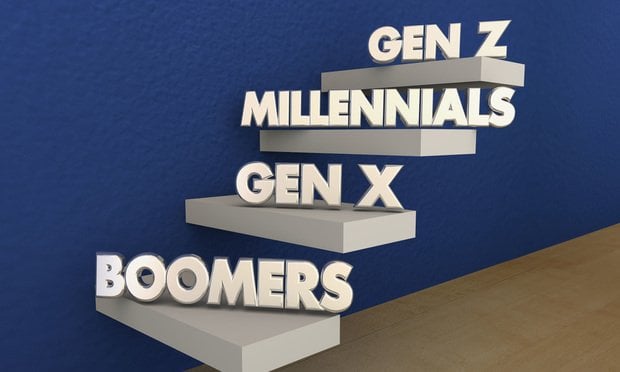(Bloomberg) -- Aprillia Jeffries is a model success story forher company's efforts at improving the health of its staff.
|Read: How to sneak wellness into yourcompany
|Jeffries, who works at Aetna, has lost 50 pounds and droppedeight dress sizes in the last two and a halfyears through a program at Aetna run by Newtopia, acompany that provides wellness services.
|She has access to one-on-one coaching and a personalizeddiet and exercise regimen, but Jeffries, 46, credits her stellarresults to a DNA test offered as part of theprogram.
|"I had tried so many other things that were not so successfulfor me: Weight Watchers, exercise, making myself a promise that I'mgoing to eat right," she said. A mental switch finallyflipped when Jeffries's DNA test indicated she had somegenetic predisposition to being overweight. "It wasn't all me thatwas the problem," she said.
|Employers have poured money into wellness programs, hoping to reducehealth insurance costs, but employees have been lessenthusiastic.
|Read: Smartphones get peoplemoving
|More than two-thirds of organizations have some sort of healthor fitness offering, from health screening assessments toin-office exercise classes. Companies spent a record $693 perhead on wellness initiatives last year, up from $594 the yearbefore.
|For all that effort, Gallup's research put participation ratesin wellness programs, an umbrella term for a variety ofemployer-sponsored health initiatives, at just 24 percent in2014.
||When it comes to disease management programs thathelp people with chronic conditions, like diabetes, and havethe greatest financial impact, participation is even lower,around 10 percent to 20 percent, research has found.
|Newtopia, which costs $500 per head, has had encouraging resultsat Aetna. Of 445 employees who enrolled in theprogram as part of a three-year study published in the Journalof Occupational and Environmental Medicine in December, about50 percent remained "engaged" a year later, according toAetna.
|More than three-quarters of participants lost an average of 10pounds. Newtopia did another pilot at Jackson Laboratoryand saw similar results.
|Many wellness programs use financial incentives, like a discounton health insurance premiums, to motivate employees to participate.That can work, but people tend to do the minimum amount of work toavoid a penalty or get the reward.
|Newtopia's participants cited the genetic testing component as abig motivator. "We had individuals that said having theknowledge of their own individual profile allowed them togain a certain understanding and mastery of their condition thatthey didn't have before," said Aetna's Dr. Greg Steinberg, who ranthe Newtopia pilot program. Off the success of the pilots,Newtopia has signed up eight employers.
|Newtopia is geared to get results that will help companies savethe most.
|The program specifically targets employees at high riskof developing metabolic syndrome, a group of risk factors thatraise a person's risk of heart disease, diabetes,stroke, and other health problems that can hurtan employer's bottom line.
||Costs jump by hundreds of dollars per month when anemployee has metabolic syndrome, actuarial analyses have found.Newtopia is only available to those with at least two risk factorsfor metabolic syndrome, such as a large waist circumference,high blood pressure, or high glucose levels.
|For those who fit the profile, Newtopia offers what itcalls "bespoke" wellness. Qualifying employees get an activitytracker and an "inspirator," a coach matched with theparticipant based on personality. "Think EHarmony," said JeffRuby, chief executive of Newtopia.
|A genetic testing kit comes in the mail. It testsfor three "susceptibility genes related to obesity," explainsDr. Louis Perusse, Newtopia's in-house geneticist. There's aso-called "fat" gene, as well as a gene thatregulates appetites, and a gene that shows eatingtriggers some people's dopamine receptor—which suggeststhey get pleasure from eating.
|The results aren't used as a diagnostic tool. "There's nota clinical element to it," said Ruby. "It's all aboutengagement." The test helps the inspirator craft a diet andexercise plan. Someone with the "fat" gene might do high-intensity exercise, for example.
|More important, the results can serve as a mental aid. "It[genetic testing] allows them to stop blaming themselves," saidRuby. "This is one area that they haven't been able to figure outfor many years. They build up shame, blame, lack of self-esteem andconfidence. [DNA testing] allows them to open up to change byconnecting that 'aha' moment with a sense of control."
|George Annas, a bioethics professor at Boston University,cautions against reading too much into DNA tests. "Thechance that they have a genetic test that can determine if you'reprone to be fatter than other people is very, very unlikely," hesaid. "What [Newtopia] really seem to be saying is that if you tellpeople that you have a genetic condition that may predispose you tobe overweight, that may motivate people."
|For some, he said, DNA testing could have the opposite effect:If someone is predisposed to gaining weight, then why botherdieting or exercising?
|Newtopia was very careful not to characterize its genetictesting as anything more than a guide.
|And as for potential privacy concerns, Newtopia saysit doesn't share any individual data with employers.
|For some, like Jeffries, knowing that genetics has something todo with her weight helped change her attitude toward weight loss."When I really just looked at it, and said OK, I was overweight, Ihave been the majority of my life. If the gene is already present,that's the dormant factor. I didn't need food to be overweight,"she said. "When I dropped those 10 pounds, it wasn't painstakinglyhard."
|Copyright 2018 Bloomberg. All rightsreserved. This material may not be published, broadcast, rewritten,or redistributed.
Complete your profile to continue reading and get FREE access to BenefitsPRO, part of your ALM digital membership.
Your access to unlimited BenefitsPRO content isn’t changing.
Once you are an ALM digital member, you’ll receive:
- Critical BenefitsPRO information including cutting edge post-reform success strategies, access to educational webcasts and videos, resources from industry leaders, and informative Newsletters.
- Exclusive discounts on ALM, BenefitsPRO magazine and BenefitsPRO.com events
- Access to other award-winning ALM websites including ThinkAdvisor.com and Law.com
Already have an account? Sign In
© 2024 ALM Global, LLC, All Rights Reserved. Request academic re-use from www.copyright.com. All other uses, submit a request to [email protected]. For more information visit Asset & Logo Licensing.








